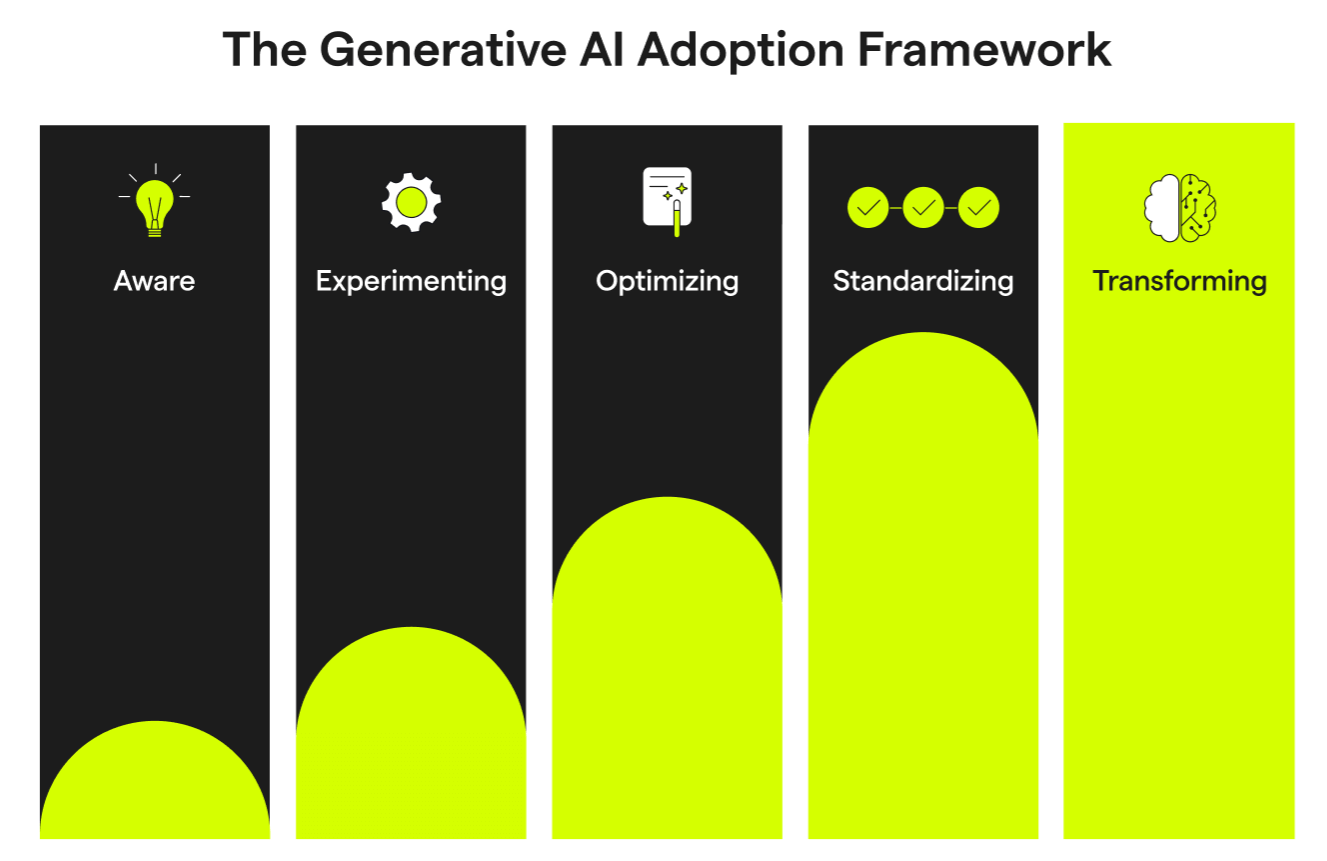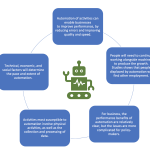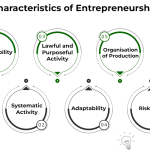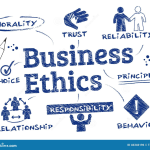Generative AI adoption is rapidly reshaping the landscape of how we utilize AI technology in our daily lives and workplaces. Recent studies reveal that nearly 40 percent of Americans have engaged with generative AI, showcasing a significant leap in awareness and application, much faster than previous waves of technology. This trend underscores not only the impact of AI but also raises questions about its integration into various aspects of our economy. As workers leverage tools like ChatGPT for everything from drafting emails to conducting complex research, understanding the generative AI survey results becomes essential for businesses aiming to stay competitive. With generative AI set to play a pivotal role in defining the future of work and technology in the economy, companies must adapt quickly to harness its full potential.
The rise of content-creating artificial intelligence is transforming our approach to work and daily tasks in unprecedented ways. As we witness a surge in the utilization of these advanced technologies, the implications for productivity and innovation become increasingly apparent. Companies and individuals are now experimenting with AI tools that enhance efficiency, creating a notable shift in how tasks are managed in both personal and professional environments. From automating routine processes to aiding in complex decision-making, the integration of AI at work reflects a broader evolution in our interaction with technology. Not only does this signify a new chapter for many industries, but it also raises important considerations about the future skills needed in an economy increasingly shaped by AI.
The Rapid Adoption of Generative AI in the Workforce
Generative AI has seen an astonishing rate of adoption, outperforming past technologies like the personal computer and the internet. This rapid embrace illustrates not just enthusiasm from users but also indicates a fundamental shift in workplace dynamics. According to recent studies, nearly 40% of American adults have engaged with generative AI technologies for various tasks, a statistic that surprises many. For employers, this technological integration holds the potential to significantly streamline processes and enhance productivity across multiple sectors, ultimately redefining what AI technology use looks like at work.
The implications of this swift adoption extend beyond just individual productivity; they affect organizational structures and business strategies as well. Companies that harness generative AI effectively are likely to gain a competitive advantage, as early adopters can leverage efficiency and innovation. This shift may necessitate retraining workers, redefining roles, and even rethinking how businesses operate fundamentally. As generative AI continues to evolve, its integration into the workplace can significantly influence the broader economy, highlighting the importance of proactive adaptation to these emerging technologies.
Demographics and Generative AI Usage Patterns
The usage of generative AI tools is not uniform across different demographic groups. Research has shown that younger individuals, particularly those with higher education levels and those in white-collar jobs, are significantly more likely to engage with AI technologies at work. This pattern echoes historical trends in technology adoption, where demographic factors influence how new tools are embraced. Interestingly, while the rise of generative AI appears to attract a broader audience compared to earlier technologies, disparities across gender and education still narrow its accessibility.
This demographic divide emphasizes the necessity for targeted outreach and education surrounding generative AI applications. Organizations must recognize that, while many employees utilize these technologies informally, formal training could enhance efficiencies and foster a culture of innovation. By tailoring education initiatives to fit diverse workforce segments, businesses can ensure equitable access to generative AI resources at work, increasing overall engagement and effectiveness.
Exploring the Impact of AI on Productivity
One of the most significant impacts of generative AI is its potential to boost productivity within both personal and professional settings. AI tools like ChatGPT facilitate essential tasks such as research and communication, empowering users to leverage technology more effectively. In the workplace, AI can optimize workflows, helping employees to focus on creative problem-solving and strategic decision-making, rather than mundane tasks. This transition towards a more efficient work environment is crucial for organizations aiming to stay competitive in an increasingly tech-driven economy.
Moreover, the integration of AI technologies fosters a culture of innovation. When employees can utilize generative AI for routine tasks, they free up cognitive resources for more complex challenges, stimulating creativity and strategic thought. As companies adapt, we see a shift in how roles are defined and how teams collaborate. The impact of AI, therefore, extends beyond mere productivity enhancements; it reimagines the workplace landscape, encouraging a more dynamic approach to technology in the economy.
Generative AI vs. Traditional Technologies: A Comparative Study
When examining generative AI’s adoption compared to traditional technologies like personal computers and the internet, it becomes clear that generative AI is setting new benchmarks for speed and acceptance. Initial surveys indicate that generative AI’s embrace is about twice as fast as previous technological revolutions, suggesting that the foundational tools already present in homes and workplaces have acted as catalysts for this unprecedented uptake. This rapid integration points to a generational shift in how technology is perceived and employed within daily tasks.
By analyzing historical adoption patterns, researchers can better understand the contours of generative AI’s impact on work and society. Early adopters are often in STEM fields or managerial positions, where the capabilities of AI can be maximized. However, the difference in engagement across various sectors hints at the necessity for customized strategies that address the unique needs of different industry groups. These insights will be invaluable as businesses strategize to incorporate generative AI into their operational framework.
A Closer Look at AI Usage Across Industries
Generative AI is already making waves across various industries, but usage rates can differ significantly depending on the sector. Industries like technology, finance, and healthcare exhibit higher engagement levels, as professionals are integrating AI into tasks like data analysis and patient care management. In contrast, blue-collar sectors are beginning to tap into these technologies, although they currently report lower usage rates. This disparity presents both challenges and opportunities for training and infrastructure development.
Addressing the varying levels of generative AI usage across industries is critical for ensuring that all sectors can capitalize on potential advancements. Companies should evaluate their unique needs and consider how generative AI applications can be tailored to drive efficiency and productivity. By providing adequate resources and support for AI integration, organizations can boost adoption rates and unlock the full potential of this transformative technology.
Overcoming Barriers to Generative AI Adoption in Organizations
Despite the evident benefits of generative AI, many organizations face barriers to widespread adoption. Common concerns include a lack of understanding about how to implement AI into existing workflows and fear of job displacement due to automation. This hesitation can stall critical innovations that AI could bring. For effective integration, businesses must address these concerns head-on, offering education and training for employees and creating a culture of openness toward new tools.
Leadership also plays a crucial role in overcoming these barriers. Decision-makers need to champion the use of generative AI technologies proactively, framing them as tools for enhancement rather than replacements. Developing policies that encourage exploration and experimentation with generative AI will lay the groundwork for a more innovative organization. As companies cultivate a supportive environment, they can better harness the power of AI technology to improve processes, subsequently impacting labor dynamics and economic performance.
Long-term Economic Implications of Generative AI
The swift adoption of generative AI technologies poses significant long-term implications for the economy. As companies harness AI effectively, we may see profound shifts in workforce requirements and productivity levels, resulting in transformations that echo those witnessed at the dawn of the internet and personal computing. The economy is likely to benefit from these advancements through enhanced efficiency and the cultivation of new markets and job categories, yet it also raises questions about the future of work and the skills needed to thrive.
While generative AI promises increased economic productivity, its potential displacements and transitions in the job market must be managed strategically. Ensuring that the workforce is prepared for these changes is essential, with a focus on continuous learning and adaptability. Policymakers must play a crucial role in shaping education and job training programs that equip citizens with the necessary skills to succeed in an AI-enhanced economy, thus maximizing the benefits while mitigating the social ramifications of such technological advances.
The Importance of Continuous Research in AI Adoption
As generative AI technologies continue to evolve, continuous research and data analysis become critical to understanding how they shape workplace dynamics and economic landscapes. The insights gleaned from these studies inform businesses and policymakers about the current trends, usage patterns, and adoption barriers, resulting in actions that better align resources with market needs. A robust understanding of AI technology use is essential for forward-thinking organizations aiming to remain competitive in an ever-changing environment.
Furthermore, by regularly updating research methodologies and extending the scope of inquiries, researchers can elucidate noteworthy trends and shifts in generative AI adoption over time. This proactive approach can guide organizations in developing strategic initiatives for incorporating AI into their operations. Timely insights can also encourage public engagement in AI development discussions, fostering a more inclusive approach to technological advancements that ultimately benefit all sectors of society.
Navigating the Future of Work with Generative AI
The rapid integration of generative AI into workflows signals a potential transformation of the future of work. As organizations adapt to include these advanced technologies, the dynamics of collaboration, communication, and employee roles may be reshaped significantly. Embracing generative AI enables a more agile workforce that can respond to changing market demands and drive innovation while minimizing operational inefficiencies.
To navigate this evolving landscape successfully, companies must invest in training and reskilling initiatives that empower employees to harness the full potential of generative AI. By blending human intelligence with AI capabilities, organizations can cultivate an innovative culture that enhances problem-solving and creativity. This future-focused approach reinforces the belief that technology, when integrated thoughtfully, can augment human capabilities and transform industries in unprecedented ways.
Frequently Asked Questions
How quickly is generative AI adoption outpacing traditional technologies?
Generative AI adoption is happening at a significantly faster rate than traditional technologies such as the internet and personal computers. Recent surveys indicate that nearly 40 percent of U.S. adults have engaged with generative AI, with 28 percent incorporating it into their work tasks. This rate is higher than the internet’s adoption rate of 20 percent within two years after its launch.
What impact does generative AI have on work productivity?
Generative AI has the potential to greatly enhance work productivity by automating repetitive tasks, assisting in research, and streamlining communication, such as composing emails or reports. The integration of AI technology into the workplace can optimize workflows, allowing employees to focus on more strategic and creative aspects of their jobs.
How can businesses leverage generative AI effectively?
Businesses can leverage generative AI by integrating it into various operational tasks such as data analysis, customer service automation, and content generation. Companies that understand how to implement AI technology into their processes, rather than treating it as a standalone solution, will gain a competitive advantage in their industries.
What roles are most impacted by generative AI at work?
Generative AI is predominantly adopted in STEM and management roles, reflecting its utility in data-heavy and strategic environments. However, its use is also observed in blue-collar sectors, indicating that the impact of AI adoption spans a wide range of professions and industries, making it a broadly applicable technology.
Are there any demographic trends in generative AI adoption?
Yes, demographic trends indicate that younger individuals, those with higher education, and men tend to adopt generative AI at higher rates. This pattern mirrors past technological adoptions, with younger users demonstrating a more robust engagement with AI technology as they are often more familiar and comfortable with digital tools.
How does generative AI compare to other technologies like PCs and the internet?
Generative AI is being adopted more rapidly than both personal computers and the internet did during their early adoption phases. This accelerated acceptance suggests that generative AI has significant economic implications, similar to those foundational technologies that reshaped the workplace.
What future trends should we expect with generative AI in the economy?
Looking ahead, generative AI is expected to become increasingly integral to business operations. Companies are likely to explore innovative applications that harness AI technology, driving significant changes within industries and potentially transforming economic interactions over the next decade.
What should employers consider regarding generative AI policies?
Employers should develop clear policies around the use of generative AI, balancing opportunities for innovation with guidelines on data privacy and security. It is crucial to create an environment where employees feel encouraged to experiment with AI technology, fostering creativity while using it responsibly.
How can generative AI surveys inform business strategies?
Generative AI surveys provide valuable insights into usage patterns and employee preferences regarding AI technology. By analyzing this data, businesses can tailor their strategies to integrate generative AI effectively, ensuring they capitalize on its potential benefits and address any areas of concern related to its adoption.
How can individuals improve their skills in using generative AI?
Individuals looking to enhance their skills in generative AI should engage in continuous learning through online courses, workshops, and practical applications. Familiarizing themselves with different AI tools and platforms will help them leverage this technology more effectively in both personal and professional contexts.
| Key Points | Details |
|---|---|
| Speed of Adoption | Generative AI adoption is faster than both the internet and personal computers. Nearly 40% of U.S. adults aged 18-64 have used it. |
| Usage at Work vs. Home | 28% of employed individuals use Generative AI at work, while nearly 33% use it for personal tasks. |
| Demographic Trends | Higher adoption rates are noted among younger individuals, men, and those in white-collar jobs. |
| Applications of AI | People use AI for composing emails, conducting research, and seeking guidance on tasks, with broad adoption across various professions. |
| Future Implications | The swift adoption of Generative AI indicates that it could have a profound impact on business operations and technology development. |
Summary
Generative AI adoption is transforming the landscape of technology at an unprecedented pace, outstripping previous technological innovations like the internet and personal computers. The rapid uptake among nearly 40% of Americans suggests significant implications for both personal and professional environments. Organizations that recognize and embrace these generative AI tools stand to gain immense competitive advantages. The stunning statistic of 28% of employed individuals utilizing it at work signifies a shift that businesses must adapt to foster innovation and efficiency. As younger generations lead the way in adoption, it’s imperative for executives and tech leaders to develop strategies around generative AI to harness its full potential—making it a focal point for future growth and productivity in the coming years.








